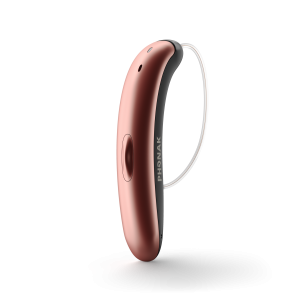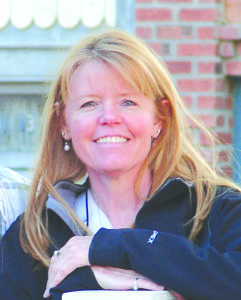A hearing health provider can offer tailored guidance and answer questions about the minutiae. 
Inside the Ear or Behind?
At the most basic level, one must choose between hearing aids that are contained entirely within the ear or sit on top of the ear. One style is not superior to the other in terms of sound quality or processing power, but each does have its own advantages and disadvantages. An in-the-ear (ITE) style is custom-molded to fit the patient’s ears specifically. Thus, an ITE aid can be quite comfortable and easy to insert for those with dexterity or vision issues. They can also be more discrete, depending on the size of the shell, if cosmetics are a concern. However, as they completely fill the ear canal, patients with better hearing in the low frequencies can feel “plugged up,” and experience difficulty adjusting to their own voice. ITEs can also be more fragile and are not a viable option for those with chronic middle ear issues.
The other style is one that has the hearing aid resting on top of the ear between the skull and pinna. Sound is delivered to the ear canal via either a thin wire (receiver-in-the-canal (RIC)) or tubing and an earmold (behind-the-ear (BTE)). The degree of hearing loss may act as the determining factor on occasion, as those with a profound hearing loss would need the power a BTE aid provides. However, most patients should be able to use an RIC aid. An RIC aid is advantageous in that it does not fill the entire canal, providing for a more natural sound quality. They are also highly durable and easy to maintain. One feature exclusive to non-ITE aids is the option of a rechargeable battery. Disadvantages of this style are that it can be more difficult to put on and it can be more visible. The cost difference is usually negligible between ITE and non-ITE aids.
How Fancy Should They Be?
Once the style is chosen, the next decision is level of technology. As with any electronics, there is a range of how advanced hearing aids can be. Noise is going to be the most important factor in choosing a level. All levels of hearing aids produced by a given manufacturer will provide the same sound quality and amplify 360 degrees when in quiet. Thus, if the patient is elderly and spends the majority of their waking hours watching TV, entry-level hearing aids will suffice.
Those who are younger and are in more challenging listening environments will derive more satisfaction from a fancier aid. First, there are going to be more programs and algorithms available for reducing background and wind noise. For example, a standard-level aid may have three programs designed to improve listening ability in noise and nothing to filter out wind. The advanced level may have five programs and an algorithm for wind, and premium even more. Second, the fancier a hearing aid becomes, the more automatic its function. All levels possess an automatic program, which allows the hearing to analyze your environment and self-adjust. A fancier hearing aid will have more modes from which it can automatically choose. In essence, the artificial intelligence becomes more precise. Finally, higher-level hearing aids have more directionality. An entry-level aid will either amplify all around the patient or directly in front of them. But what if the room is noisy and the talker is off to the right? More advanced hearing aids are able to focus on specific points around the body, with the number of points correlated with the level.
A hearing health provider can offer tailored guidance and answer questions about the minutiae. But the above can function as a primer for the start of the research process. Possessing a firm grasp of amplification needs and desires will help ensure the best possible outcome. QCBN
By Jeff Lane, Au.D.
Trinity Hearing Center is located at 1330 N. Rim Dr., Suite B in Flagstaff. For more information, visit the website at TrinityHearing.net. Jeff Lane is a doctor of audiology with a passion for improving the lives of others. Dr. Lane may be reached at 928-522-0500 or at audio@trinityhearing.net.








